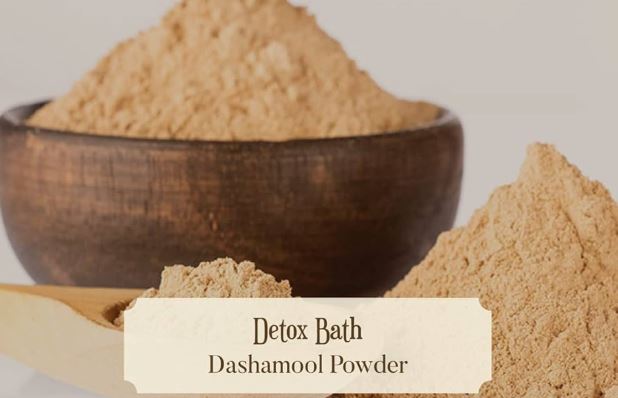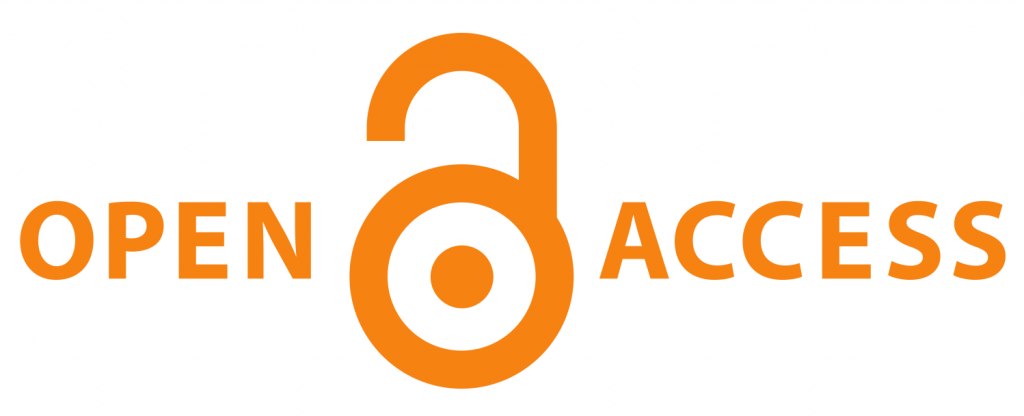Dashmoola in Stri Roga: A Review on its Therapeutic Benefits
Abstract
Dashmoola is a prominent Ayurvedic formulation that consists of ten medicinal roots, commonly utilized in the treatment of various gynecological issues, collectively referred to as Stri Roga. This review examines the therapeutic advantages of Dashmoola for Stri Roga, highlighting its pharmacological attributes, historical applications, and validation through contemporary scientific research. It offers a thorough analysis of Dashmoola’s influence on menstrual health, pregnancy, postpartum care, and reproductive wellness. The formulation’s botanical components feature herbs known for their significant anti-inflammatory, analgesic, and adaptogenic characteristics. These attributes render Dashmoola useful in addressing conditions such as menstrual irregularities, difficult periods, heavy menstrual bleeding, infertility, pregnancy-related issues, recovery after childbirth, and symptoms associated with menopause. Moreover, its neuroprotective and immune-modulating effects enhance overall women’s health. Phytochemical investigations have identified bioactive compounds within Dashmoola, including alkaloids, flavonoids, saponins, tannins, all of which contribute to its therapeutic impact. Scientific studies corroborate its traditional applications, emphasizing its effectiveness in hormonal regulation, pain alleviation, and tissue healing. The review also covers clinical applications of Dashmoola, mentioning various formulations like Dashmoolarishta, and Dashmoola Kwath, along with their specific advantages. Additionally, it highlights the necessity for further clinical trials to confirm its effectiveness and establish standard dosages. Potential side effects and necessary precautions for safe usage are also reviewed. The findings indicate that Dashmoola holds significant promise as a natural treatment for gynecological disorders and the promotion of reproductive health. Nevertheless, more comprehensive research is essential for its effective integration into contemporary gynecological practices. This review functions as a detailed resource for comprehending the relevance of Dashmoola in women's health and its future possibilities within integrative medicine.
Downloads
References
Rohilla R, Kumbar J. An Ayurvedic perspective on dysmenorrhea: case-based evidence. Cuestiones de Fisioterapia. 2025. Available from: https://cuestionesdefisioterapia.com
Kishor YC, Bir MI, Khushboo J. Critical review of Ayurvedic herbs in treatment of gynecological problems. Int J Res AYUSH Pharm Sci. 2024 May 4;1-4. Available from: https://ijraps.in
Patel M, Vishnoi S, Neelima A. An empirical review of fundamental principles of Ayurveda for women’s reproductive health and diseases. J Ayurveda Integr Med Sci. 2023 Nov 9;8(9):105-11. Available from: https://jaims.in
Jhala M, Vishnoi S. A rational understanding of Pittaja Yonivyapad (vaginitis). 2023. Available from: https://amazonaws.com
Tuvaraka AP, Khadira AP. Herbal formulations for treating various diseases. Herbal Formulations, Phytochemistry and Pharmacognosy. 2024 Jun 14;80. [HTML]
Das M, Debnath S, Bolleddu R, Mondal S, Gharat P, Subhose V, Meena AK, Singh R, Babu G. Quality control and shelf-life study of Dasmula Taila—a classical Ayurvedic formulation for Nasya. Available from: https://researchgate.net
Ojha R, Gupta AK, Pathak R, Pandey SK. Shilajit—an elixir of Ayurveda: A literary review of traditional usage as well as modern findings. Int J Appl Res. 2021. Available from: https://researchgate.net
Shilpa J, Anupama V. Role of Sthanika Chikitsa in post-menopausal women care. Organized by: Department of Prasuti Tantra & Stree-Roga, Faculty of Ayurveda, Parul University. 2021 Nov 18. Available from: https://paruluniversity.ac.in
Trivedi D, Jain P, Patel V, Kotasthane S, Das S. Herbal formulation: An Ayurvedic treatment for human diseases. In: Herbal Formulations, Phytochemistry and Pharmacognosy. Elsevier; 2024 Jan 1. p. 77-88. [HTML]
Ti H, Zhuang Z, Yu Q, Wang S. Progress of plant medicine-derived extracts and alkaloids on modulating viral infections and inflammation. Drug Des Devel Ther. 2021 Mar 31;1385-408. Available from: https://tandfonline.com
Jubaidi FF, Zainalabidin S, Taib IS, Hamid ZA, Budin SB. The potential role of flavonoids in ameliorating diabetic cardiomyopathy via alleviation of cardiac oxidative stress, inflammation, and apoptosis. Int J Mol Sci. 2021 May 12;22(10):5094. Available from: https://mdpi.com
Japheth KP, Kumaresan A, Patbandha TK, Baithalu RK, Selvan AS, Nag P, Manimaran A, Oberoi PS. Supplementation of a combination of herbs improves immunity, uterine cleansing, and facilitates early resumption of ovarian cyclicity: A study on post-partum dairy buffaloes. J Ethnopharmacol. 2021 May 23;272:113931. [HTML]
Fazmiya MJ, Sultana A, Heyat MB, Parveen S, Rahman K, Akhtar F, Khan AA, Alanazi AM, Ahmed Z, Díez ID, Ballester JB. Efficacy of a vaginal suppository formulation prepared with Acacia arabica (Lam.) Willd. gum and Cinnamomum camphora (L.) J. Presl. in heavy menstrual bleeding analyzed using a machine learning technique. Front Pharmacol. 2024 Feb 12;15:1331622. Available from: https://frontiersin.org
Seetharaman AC, Santosh W, Vasantharekha R. Potential health benefits of phytochemical compounds on endocrine disruption and female reproductive health. In: Plant Derived Bioactive Compounds in Human Health and Disease. 2024 Dec 10;192. [HTML]
Saxena H, Parihar S, Pawar G, Rao GR, Sahu VR, Dhar P. Comparative analysis of phenolic content in Solanum indicum L. harvested from different locations in Madhya Pradesh, India. Environ Conserv J. 2021 Dec 19;22(3):415-21. Available from: https://environcj.in
Chouhan P, Garg AK. Exploring the therapeutic potential of herbal intervention in polycystic ovary syndrome: A systematic review and meta-analysis. Migrat Lett. 2023. Available from: https://researchgate.net
Carson SA, Kallen AN. Diagnosis and management of infertility: a review. JAMA. 2021. Available from: https://nih.gov
Raj GR, Uppinakuduru S, Rao PN. Sweda with and without Parisheka on spasticity in children with cerebral palsy. Available from: https://researchgate.net
Pergolizzi Jr JV, LeQuang JA, Coluzzi F, El-Tallawy SN, Magnusson P, Ahmed RS, Varrassi G, Porpora MG. Managing the neuroinflammatory pain of endometriosis in light of chronic pelvic pain. Expert Opin Pharmacother. 2024 Nov 21;25(17):2267-82. Available from: https://researchgate.net
Shohag S, Akhter S, Islam S, Sarker T, Sifat MK, Rahman MM, Islam MR, Sharma R. Perspectives on molecular mediators of oxidative stress and antioxidant strategies in neuroprotection and neurolongevity: An extensive review. Oxid Med Cell Longev. 2022;2022(1):7743705. Available from: https://wiley.com
Yadav R, Dei L. Review of clinical studies on Rajonivrutti Avastha with special reference to menopausal syndrome. Int J Adv Med. 2021. Available from: https://academia.edu
Khan F, Maharaj M, Govender N, Thandar Y. Management of polycystic ovarian syndrome: a qualitative inquiry among complementary and alternative medicine practitioners in South Africa. Homeopathy. 2025. [HTML]
Tanwar S, Panda JK, Rani T. Ayurvedic approach to manage polycystic ovarian syndrome with Yoga Basti—a case study. J Ayurveda Integr Med Sci. 2024 Feb 25;9(1):298-303. Available from: https://jaims.in
Tripathi S. Study of various Ayurvedic herbal remedies for infertility in females. Available from: https://academia.edu
Patil VSY, Suryawanshi VM. Menopause wisdom with Ayurveda. Available from: https://researchgate.net
Jaiswal T, Patil J. Role of Ayurveda therapy in the management of amenorrhea with special reference to painful and irregular menstrual cycles. 2024. Available from: https://researchgate.net
Singh N, Sharma R. A conceptual view of endometriosis through an Ayurveda perspective. J Ayurveda Integr Med Sci. 2023. Available from: https://jaims.in
Morbale ST, Parida S, Chowdhury L, Sahinsha MM. Introduction to herbal drugs and technology. 2024. [HTML]
Khatal S, Gholap S, Bhati K. A systematic review and meta-analysis of Ayurvedic interventions for infertility in polycystic ovary syndrome. Available from: https://researchgate.net
Saxena HO, Parihar S, Mohammad N, Pawar G. Variation for caffeic acid and phenolic content in different plant parts of Solanum xanthocarpum Schrad. and Wendl.—a commercially important Dashmool species. Clin Phytosci. 2021. Available from: https://springer.com
Wilkins CA, Hamman H, Hamman JH, Steenekamp JH. Fixed-dose combination formulations in solid oral drug therapy: advantages, limitations, and design features. Pharmaceutics. 2024. Available from: https://mdpi.com














